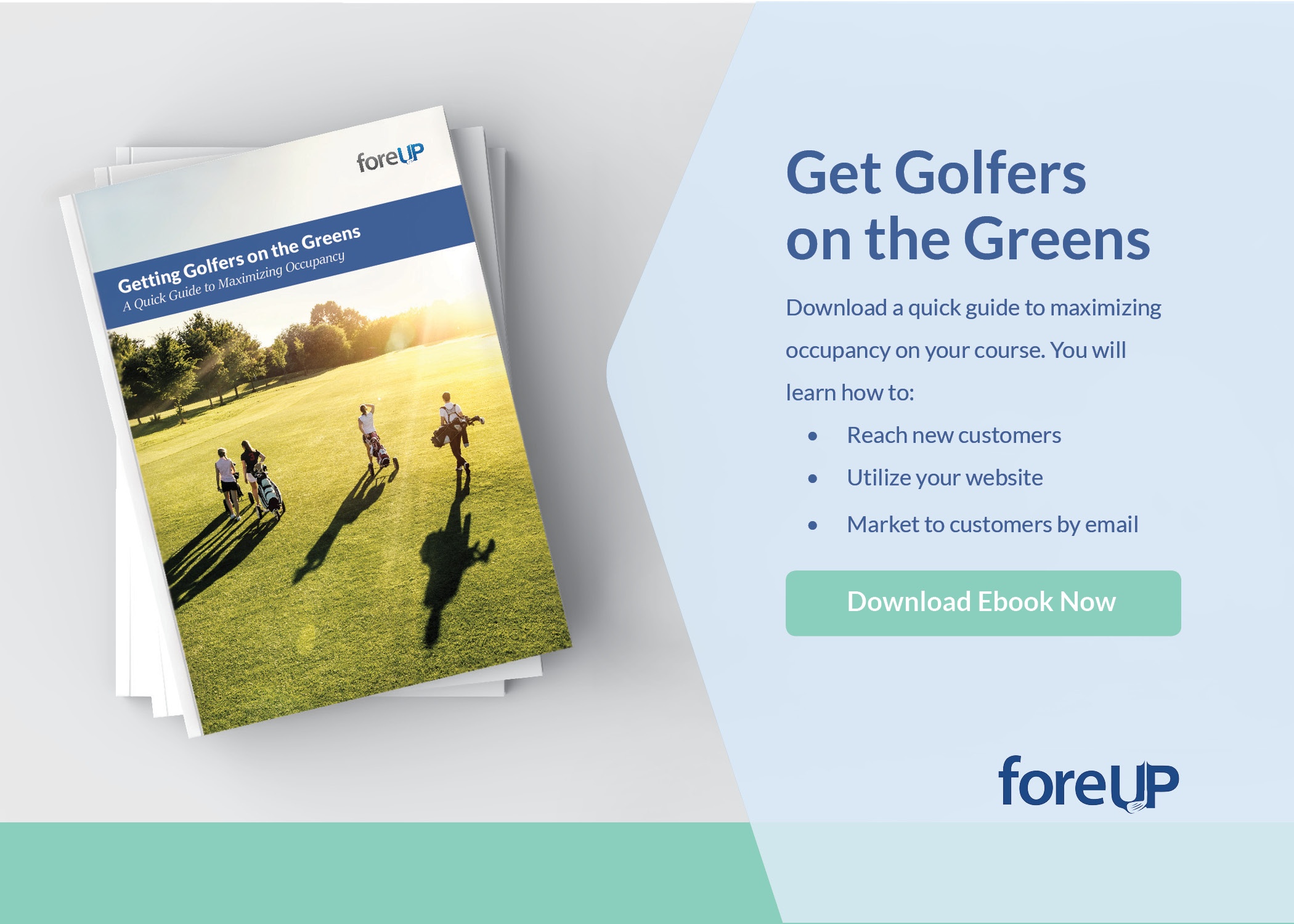This is the third in a series. For the first chapter, click here.
A strong online and social media presence is absolutely vital these days as it provides a great way to get your company public recognition and connect with your customers. However, these online resources are not always the most reliable tool for making sales.
Why use email?
Email converts better. People who buy products marketed through email spend 138% more than those who do not receive email offers. In fact, email marketing has an ROI of 3800%. That’s huge! And if you are wondering if social media converts even better, think again: the average order value of an email is at least three times higher than that of social media.
We recommend the following services:
- foreUP: Create customized opt-in forms and emails in your golf course management software.
- OptinMonster: A/B test targeted and personalized forms on your site.
- Constant Contact: The world’s largest email marketing company. Use drag-and-drop tools to create professional templates.
- MailChimp: Simple design and forgiving of bounces
Once you have a few great templates and your opt-in forms all ready to go, it’s time to find people to send your emails to! Most courses have the emails of all their current customers, and that is a great place to start. You can send targeted emails to them informing them of tournaments, holiday specials, or happy hour at the bar.
To find new customers, you can make an opt-in form that offers them a coupon (maybe a ½ off round of golf), a discount to the pro shop, or a similar promotion. In the form, be sure to include a mandatory email field, and let them know that they’ll be subscribed to your newsletters by doing so.
But even after you’ve carefully compiled a list of clients and potential customers, you still need people to read your email. Here are four tips that will help you reach as many customers as possible.
Don’t be spam!
Email providers, as well as many email marketing services, are very careful to protect their customers from spam. Although it’s almost inevitable that some of your emails will eventually be flagged as spam, either on purpose or accidentally, you can limit how many are marked as spam by following these guidelines:
- Make sure all recipients have actually opted-in to receiving your emails. (We can’t emphasize this point enough!)
- Ask subscribers to add you to their address book.
- Don’t use “sales” language, such as “coupon,” “discount,” “sale,” or “giveaway” in your subject line.
- Don’t “bait-and-switch” by using deceptive subject lines.
- Include your location.
- Include an easy way for subscribers to opt-out of your emails.
Timing
A MailChimp study suggests that, in general, the best time to send emails is 10 am (in the receiver’s timezone) on a weekday. Emails sent at this time were opened much more than emails sent at any other time. However, that time is an average, so you must be sensitive to your clientele and find what time is best for them.
Optimize for Mobile
According to several studies, 67.2% of consumers use a smartphone to check their email. That means that a large amount of your customers are on their phones, looking at the emails you send them. And while a template might look beautiful on a computer screen, it might come out totally unreadable on a phone. Here are some tips for reaching mobile users:
- Long subject lines won’t be viewable, so keep it short and interesting
- Keep the formatting simple (single-column), under 600px wide.
- Use a larger font
- Android turns images off by default. Make sure the email looks good without them.
- Use smaller images to reduce load time
Be Funny and Personable
People receive so many emails these days. If it’s not at least mildly entertaining, they’re going to skip reading it. Here are some tips to follow as you write:
- Write to one person. Even though the email is sent to thousands of people, only one will read it at a time. With that in mind, write your email to the customer who you could see taking an action on your email.
- Make it conversational (but not unprofessional). These are your friends, so you can talk to them like they are. But always use proper grammar and spelling, and avoid slang and abbreviations (like in social posting).
- Be playful. People receive so many emails throughout the day, and you don’t want yours to be another one that they blow off. Be creative and funny in your writing and what you include in the email. You can even use GIFs or a funny video!
Email can be a powerful tool for ensuring repeat visits from existing customers and encouraging new visits from potential clients. Though it may take some effort to set up, modern marketing tools make email marketing a viable option for businesses of any size and give course operators a targeted, directed, and engaging method for marketing.
Come back next week for Chapter 4!
Like what you read? Be the first to get whole ebook.
